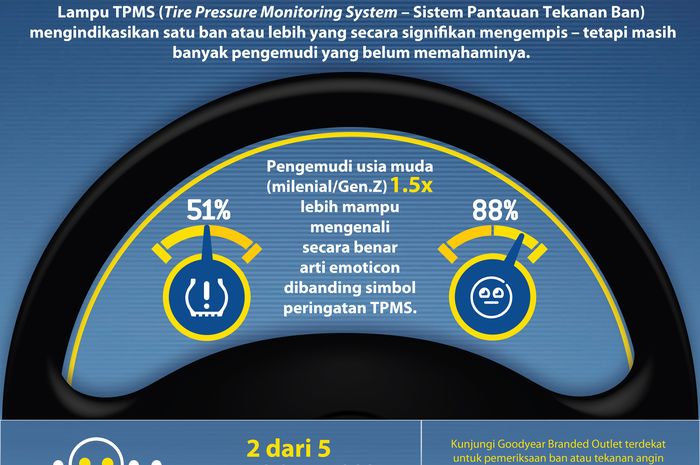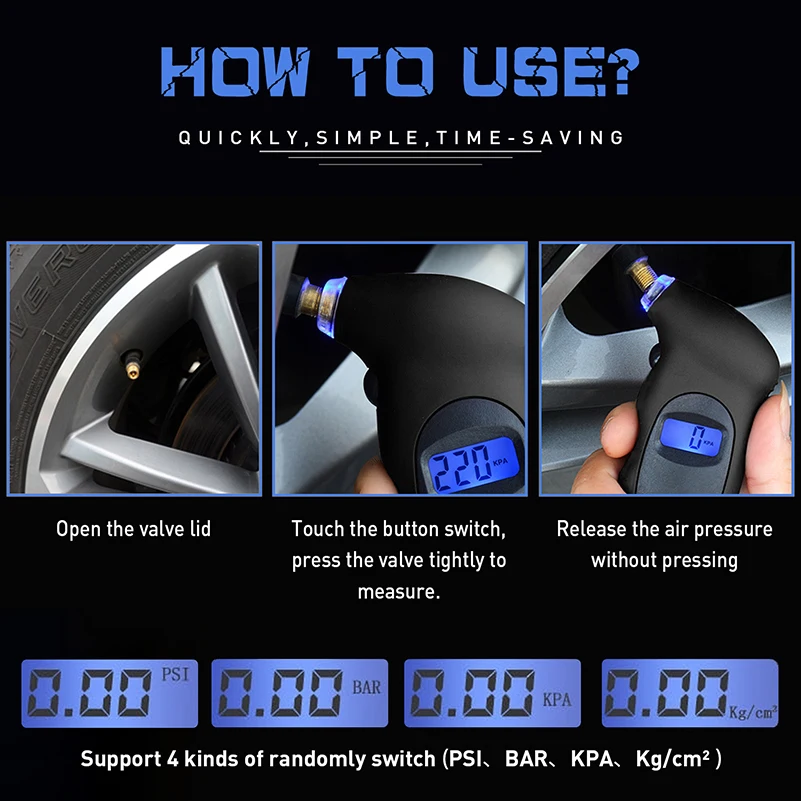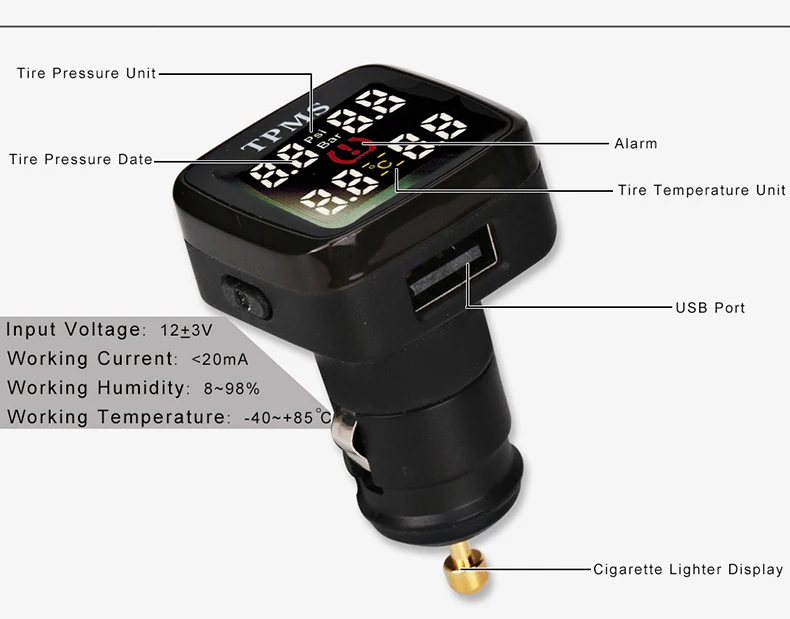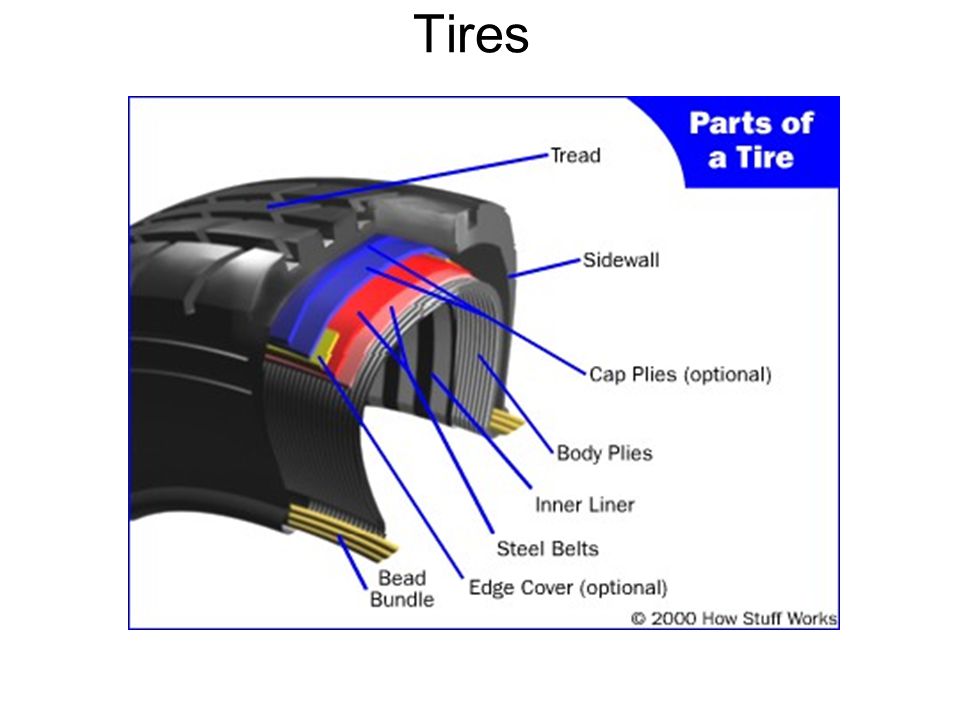Improperly inflated tires have numerous risks associated with it, some being catastrophic. United States government legislation now mandates automakers to include production vehicles with a system that monitors tire pressures. Through this blog post, we will look into the evolution of tire pressure monitor sensor technology and how they work. First, let us start with the basics of tire pressure
Where can I find what tire pressures my vehicle should be using?The most obvious place to check your tire pressure recommendations is in your owner’s manual. If you do not have a copy of your BMW owner’s manual you can download a free digital version from our website HERE. In addition, tire pressure recommendations is located on a placard inside the driver's door jamb of your vehicle. This placard includes not only tire pressures but also vehicle weight and VIN.
It is important to note that the tire pressures listed are for vehicles with OEM wheels, the ones delivered with your vehicle. Therefore, if you have aftermarket wheels these are NOT the recommended tire pressures. Also note, these tire pressures are the COLD pressure readings. The best time to inflate your tires is in the morning after your car has been sitting all night. Checking your tire pressures after you have driven is not an accurate method as tire pressures increase with heat, friction, of driving.
To learn why tires lose pressure over time and alternate methods of filling tires, check out our post on nitrogen-filled tires HERE
What are the consequences of improperly inflated tires?Since tire pressure gradually reduces over time, most drivers do not notice the loss in tire pressure until it is too late. BMW recommends checking your vehicle’s tire pressure twice a month. Under or over-inflated tires can have the following risks:
➛ Increased tire wear, reducing tire life.
➝ Impaired vehicle handling
➛ Reduced fuel economy
➝ Risk of a tire blow out
In the year 2000, numerous lawsuits were filed against major tire manufacturers for catastrophic failures. The US government passed the “TREAD” Act in November 2000. The TREAD act stands for “Transportation Recall Enhancement Accountability Documentation”. This act involved many new standards for the tire industry but the topic of focus will be on the requirement for TPM (Tire Pressure Monitoring).
The US government passed the “TREAD” Act in November 2000. The TREAD act stands for “Transportation Recall Enhancement Accountability Documentation”. This act involved many new standards for the tire industry but the topic of focus will be on the requirement for TPM (Tire Pressure Monitoring).
There are two major ways BMW vehicles measure tire pressure, indirectly and directly. Let us go into further detail on these two methods and how they work below.
How does indirect tire pressure monitoring work?The first iteration of tire pressure monitoring was called the “Indirect” TPM system or FTM (Flat Tire Monitoring) system. This system does not measure tire pressure directly, as the name implies, but monitors tire speed. Tire speed is measured through wheel speed sensors. The vehicle’s ABS / DSC system determines pressure loss in tires by comparing wheel speed of all 4 tires. Loss in tire pressure results in a loss of wheel speed, as well as a change in tire diameter. As a result, the vehicle can alert the driver of tire pressure loss.
As a result, the vehicle can alert the driver of tire pressure loss.
The advantage of this system is that it does not require any additional equipment than what is already on the vehicle. The DSC (Dynamic Stability Control) system used for traction in conjunction with the wheel speed sensors has been a part of BMW design since the 80s. A downside of this system is that the vehicle has to be moving for a reading to take place.
The first BMW model to feature the indirect tire pressure monitor was the 2000 E39 M5. This first system will detect a pressure drop by 30% +/- 10% and alert the driver typically with a light on the dash. BMW recommends resetting the FTM system after a tire change, tire rotation, or correcting tire pressure.
How does direct tire pressure monitoring work?Direct TPM systems directly measure tire pressuring at each wheel as well as temperature. A benefit of this system over the indirect method is the vehicle does not have to be moving to get a reading. In the United States, all vehicles sold must have the direct TPM system starting in 2005 and all vehicles by 2007 must be in full compliance. This system involves a sensor installed at the valve stem of each wheel called a wheel transmitter module. These sensors monitor tire pressure and send a signal to a module via antennas.
In the United States, all vehicles sold must have the direct TPM system starting in 2005 and all vehicles by 2007 must be in full compliance. This system involves a sensor installed at the valve stem of each wheel called a wheel transmitter module. These sensors monitor tire pressure and send a signal to a module via antennas.
The first BMW model to feature the direct tire pressure monitor was the E65 / E66 7 series and was an option on the E46 3 series from August 2003 production onwards.
How do the wheel transmitter modules work?Each module contains a long life, lithium-ion battery to the internal transistor of the sensor. When the tire is not spinning the module defaults to an energy-saving mode. Each transmitter is assigned a unique ID which assigns the wheel to each corner of the car. The wheel arches on the body of the car contain a small antenna that picks up the signal from the wheel transmitter when the valve stem passes the antenna. When tire pressure falls below 3 psi (.2 bar) for more than 8 minutes, an alert will signal.
When tire pressure falls below 3 psi (.2 bar) for more than 8 minutes, an alert will signal.
The FTM or indirect tire sensors have a traditional black valve stem. The direct TPM system has a valve stem with a hex head on the stem which can be seen from the outside of the wheel. Please refer to the image below for clarification.
The purpose of the tire pressure monitoring system (TPMS) in your vehicle is to warn you that at least one or more tires are significantly under-inflated, possibly creating unsafe driving conditions. The TPMS low tire pressure indicator is a yellow symbol that illuminates on the dashboard instrument panel in the shape of a tire cross-section (that resembles a horseshoe) with an exclamation point.
That indicator light in your vehicle has a history. It’s a history rooted in years of uncertainty about proper tire pressure and many serious car accidents that might have been avoided had drivers known their air pressure was low. Even now, it’s estimated that a substantial number of vehicles hit the road each day with underinflated tires. However, proper tire maintenance with the aid of a TPMS can and does help prevent many serious accidents.
Even now, it’s estimated that a substantial number of vehicles hit the road each day with underinflated tires. However, proper tire maintenance with the aid of a TPMS can and does help prevent many serious accidents.
Before this indicator light became commonplace, knowing whether your air pressure had reached unsafe levels meant getting out, crouching down, and using a tire gauge. With few exceptions, this was the only pressure-checking tool ordinary consumers had at their disposal.
Then, in response to a surge in accidents due to underinflated tires, the US government passed the Transportation Recall Enhancement, Accountability, and Documentation (TREAD) Act. One of the outcomes of this legislation is that most vehicles sold in the United States since 2007 include a tire pressure monitoring system of some kind.
Not every TPMS works the same way. The illumination of the low tire pressure indicator represents the final step in the process of either an indirect TPMS or a direct TPMS.
An indirect TPMS typically relies on wheel speed sensors that the anti-lock brake system uses. These sensors measure the rate of revolution each wheel is making and can be used by on-board computer systems to compare with each other and to other vehicle operation data such as speed.
Based on the rate of revolution of each wheel, the computer can interpret the relative size of the tires on your vehicle. When a wheel starts spinning faster than expected, the computer calculates that the tire is underinflated and alert the driver accordingly.
So, an indirect tire pressure monitoring system doesn’t actually measure tire pressure. It’s not electronically processing the same kind of measurement you might see with a tire gauge. Instead, an indirect tire pressure monitor simply measures how fast your tires are rotating and sends signals to the computer that will actuate the indicator light when something in the rotation seems amiss.
-- Relatively inexpensive compared to a direct TPMS
-- Requires less programming/maintenance over the years than a direct TPMS
-- Less overall installation maintenance than its direct counterpart
-- May become inaccurate if you purchase a bigger or smaller tire
-- May be unreliable when tires are unevenly worn
-- Must be reset after properly inflating every tire
-- Must be reset after routine tire rotation
Direct TPMS uses pressure monitoring sensors within each tire that monitor specific pressure levels – not just wheel revolution data from the anti-lock brake system.
Sensors in a direct TPMS may even provide tire temperature readings. The direct tire pressure monitoring system sends all of this data to a centralized control module where it’s analyzed, interpreted, and, if tire pressure is lower than it should be, transmitted directly to your dashboard where the indicator light illuminates. A direct tire pressure monitor usually sends all of this data wirelessly. Each sensor has a unique serial number. This is how the system not only distinguishes between itself and systems on other vehicles, but also among pressure readings for each individual tire.
A direct tire pressure monitor usually sends all of this data wirelessly. Each sensor has a unique serial number. This is how the system not only distinguishes between itself and systems on other vehicles, but also among pressure readings for each individual tire.
Many manufacturers use proprietary technology for these highly specialized systems, so replacing a TPMS in a way that’s consistent and compatible with your vehicle will require an experienced, knowledgeable technician.
-- Deliver actual tire pressure readings from inside the tire
-- Not prone to inaccuracies because of tire rotations or tire replacements
-- Simple resynchronization after tire rotation or tire replacements
-- Batteries inside the sensors usually last for about a decade.
-- May be included in a vehicle’s spare tire
-- More expensive overall than an indirect TPMS
-- Though simple, resynchronization may require costly tools.
-- Battery rarely serviceable; if the battery is drained, the whole sensor must be changed.
-- Proprietary systems make installation, service, and replacement confusing for consumers and auto shops.
-- Sensors are susceptible to damage during mounting/demounting
Although the methods may be different, both systems serve the same purpose and activate the same indicator light. Even though a TPMS can deliver accurate alerts when properly maintained, it’s not a replacement for manual air pressure checks, consider it just another item in your car maintenance toolbox.
There’s never a good time for a flat. That’s why Bridgestone DriveGuard tires are masterfully engineered to keep you moving for up to 50 miles at speeds up to 50 MPH without disruption.
There’s never a good time for a flat. That’s why Bridgestone DriveGuard tires are masterfully engineered to keep you moving for up to 50 miles at speeds up to 50 MPH without disruption.
See Details Find Your Fit
You can find the information you are looking for in the navigation menu. Any questions can be asked in the online chat.
Diagnostic equipment:
Universal
Car Square
and adapters
Adapters based on
ELM327 chip
Multimaric
Auto Square
Multimaric
adapters
Marychiki
Diagnostic
Adapters
for professional use:
dealerships
Diagnostic complexes
Multimaric 9000
Diagnostic equipment
for motorcycles
Diagnostic equipment
Equipment
for construction equipment
Diagnostic 9000
Digital tachometers
Lux meters
Pressure gauges
Exhaust gas analysis
Additional equipment:
Programmers 9000
Diagnostics
GPS Trackers
Adapters
Emulators
AdBlue
Diagnostic
registrars
Motors
Stroboscopes
Equipment for various systems:
Equipment for
Working with Airbag/SRS
Equipment system
Equipment for
service interval settings
Equipment for
TPMS
Equipment for
Savi filter service
Equipment for 9000
diesel engines
Equipment for
refueling of air conditioners
Equipment for
cleaning of air conditioners 9Ol000
Work area lighting
Hand tools
Equipment manufacturers
|
|
|
|
Selection of equipment by vehicle brand
Cars
|
|
|
|
|
Trucks and buses
|
|
| Renault
|
|
Motorcycles
|
|
|
|
|